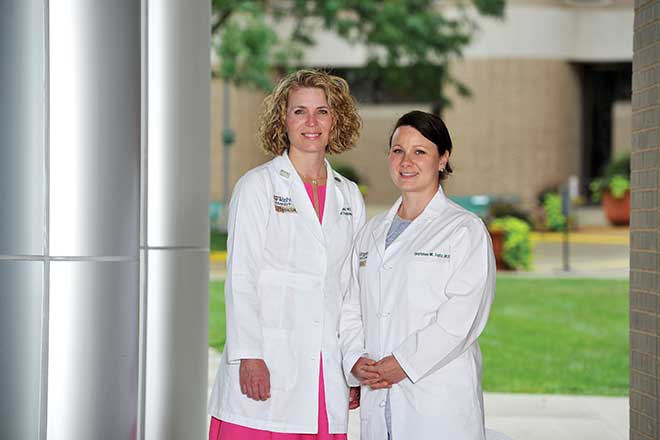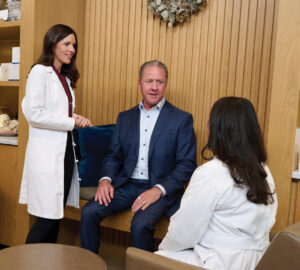In the worst case, fibroids can grow to the size of a grapefruit and enlarge the uterus as much as a 20-week pregnancy. They can cause unmanageable menstrual bleeding (menorrhagia), which can bring on anemia, and in some cases, affect a woman’s fertility. According to Gretchen Foltz, M.D., interventional radiologist at Washington University Mallinckrodt Institute of Radiology, a fibroid is an abnormal, non-cancerous growth of muscle tissue. It is not to be confused with a cyst, which is a fluid-filled mass that can grow in or on the ovaries.
More likely to occur than a single, large fibroid are multiple fibroids of about 2 centimeters in diameter. “They tend to max out in size eventually because they can’t get enough blood to grow bigger and bigger,” Foltz explains.
 Fibroid symptoms include heavy and extended menstrual bleeding, bleeding between periods, frequent urination if the growth presses against the bladder, bloating and pelvic heaviness (called ‘bulk symptoms’), constipation and sometimes pain down the legs. “Heavy periods that require numerous pads a day can be a terrible embarrassment,” says Jennifer Gould, M.D., also a Washington University interventional radiologist. “A woman may feel she can’t go out in public, and her quality of life is compromised.”
Fibroid symptoms include heavy and extended menstrual bleeding, bleeding between periods, frequent urination if the growth presses against the bladder, bloating and pelvic heaviness (called ‘bulk symptoms’), constipation and sometimes pain down the legs. “Heavy periods that require numerous pads a day can be a terrible embarrassment,” says Jennifer Gould, M.D., also a Washington University interventional radiologist. “A woman may feel she can’t go out in public, and her quality of life is compromised.”
Effective treatments are available, however, ranging from control via oral contraceptives (often doctors’ first line of defense) to hysterectomy, a major surgery with a six- to eight-week recovery time. “Some women have strong psychological ties to the uterus,” Gould says, in which case she considers a uterine fibroid embolization (UFE), a solution that blocks the blood supply to the fibroid. During this procedure, tiny particles of medical-grade plastic are delivered via catheter to the arteries that supply blood to the fibroid. The catheter is inserted into the femoral artery in the upper thigh and guided through other arteries into the uterus by X-ray. The procedure takes less than 90 minutes and is conducted under conscious sedation. Recovery time is about a week. Gould stresses, however, that because of the risk of damage to the uterine muscle as it repairs from UFE, women should wait a year before becoming pregnant.
When fibroids are affecting a woman’s fertility, Foltz suggests a myomectomy (the surgical removal of fibrous growths) as a good course of action because doctors can directly target the fibroids they deem most problematic. “A myomectomy still is considered major surgery,” Foltz says. “But it leaves the uterus intact.” Trials for other treatments currently are underway.
Foltz says the exact cause of fibroids is unclear. The condition is more prevalent in African-American women, she notes, and there may be a genetic factor. Hormones also play a part, and may be the reason why women are less prone after menopause (when hormone levels taper). She explains that the incidence of fibroids is about 20 percent for women in their 20s, rising to 40 percent for women in their 40s.
Pictured: Dr. Jennifer Gould and Dr. Gretchen Foltz
Photo: Bill Barrett
For more information on treatment options for uterine fibroids, call 314.362.2900 or visit mir.wustl.edu/ufe. Pictured on the cover: Dr. Gretchen Foltz and Dr. Jennifer Gould. Cover courtesy of Washington University Physicians








